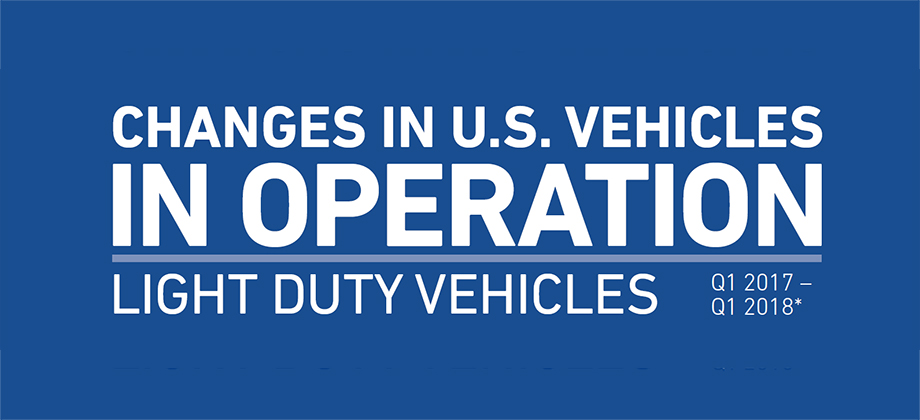All posts by Guest Contributor

Identity-related fraud exposure and losses are increasing, and the underlying schemes are becoming more complex. To make better decisions on the need for step-up authentication in this dynamic environment, you should take a layered approach to the services you need. Some of these services include: Identity verification and reverification checks for ongoing reaffirmation of your customer identity data quality and accuracy. Targeted identity risk scores and underlying attributes designed to isolate identity theft, first-party fraud and synthetic identity. Layered, passive or more active authentication, such as document verification, biometrics, knowledge-based authentication and alternate data sources. Bad guys are more motivated, and they’re getting better at identity theft and synthetic identity attacks. Fraud prevention needs to advance as well. Future-proof your investments. More fraud prevention strategies to consider>

Consumer credit scores A recent survey* released by the Consumer Federation of America and VantageScore Solutions, LLC, shows that potential borrowers are more likely to have obtained their credit score than nonborrowers. 70% of those intending to take out a consumer or mortgage loan in the next year received their credit score in the past year, compared with 57% of those not planning to borrow. Consumers who obtained at least one credit score in the past year were more likely to say their knowledge of scores is good or excellent compared with those who haven’t (68% versus 45%). While progress is being made, there’s still a lot of room for improvement. By educating consumers, lenders can strengthen consumer relationships and reduce loss rates. It’s a win-win for consumers and financial institutions. Credit education for your customers>

Keeping your customers happy is critical to success. And while reducing fraud is imperative, it shouldn’t detract from a positive customer experience. Here are 3 fraud detection and prevention strategies that can help you reduce fraud and protect (and retain) customers. Use customer-centric strategies — Recognizing legitimate customers online is more important than ever, particularly since the web’s built-in anonymity makes it a breeding ground for scammers and fraudsters. Balance fraud prevention and the customer experience — When implementing security protocols, consider consumers’ fluctuating and potentially diminishing tolerance levels for security protocols. Embrace new fraud protection technologies — Multilayered approaches should include data-driven, artificial intelligence–powered systems that will recognize customers while keeping their transactions stress-free. Fraud prevention shouldn’t discourage honest customers from buying, but it should instill confidence and strengthen the customer relationship. Learn more>

Believe it or not, 66% of consumers want to see some visible signs of security and barriers when accessing their accounts so they can be sure that a transaction is more secure. Other takeaways from our 2018 Global Fraud and Identity Report: Nearly 3/4 of surveyed businesses cite fraud as growing over the past 12 months. 30% of surveyed businesses are experiencing more fraud losses year-over-year. While 83% of businesses believe that their fraud solutions are scalable, cost is the biggest obstacle to adopting new tactics. There’s a delicate balance in delivering a digital experience that instills confidence while allowing for easy and convenient account access. It’s not easy to deliver both — but it is possible.

Business guide to new markets Competition is fierce. Expectations are high. Navigating a new market can be profitable — if managed strategically. Consider these actionable insights when entering a new market: Use historical data to identify the right target population. Identify, access and leverage the right data to gain the insights you need to make sound decisions. Consider insights from a seasoned professional for a bigger, more accurate picture of the market. Entering a new market isn’t without some risk. But with the right data, strategies and expertise, you can navigate new markets, reduce risk and start making profitable decisions. Learn more>

Trivia question: Millennials don’t purchase new vehicles. True or False?

When developing a risk model, validation is an essential step in evaluating and verifying a model’s predictive performance. There are two types of data samples that can be used to validate a model. In-time validation or holdout sample: Random partitioning of the development sample is used to separate the data into a sample set for development and another set aside for validation. Out-of-time validation sample: Data from an entirely different period or customer campaign is used to determine the model’s performance. We live in a complicated world. Models can help reduce that complexity. Understanding a model’s predictive ability prior to implementation is critical to reducing risk and growing your bottom line. Learn more

As I mentioned in my previous blog, model validation is an essential step in evaluating a recently developed predictive model’s performance before finalizing and proceeding with implementation. An in-time validation sample is created to set aside a portion of the total model development sample so the predictive accuracy can be measured on a data sample not used to develop the model. However, if few records in the target performance group are available, splitting the total model development sample into the development and in-time validation samples will leave too few records in the target group for use during model development. An alternative approach to generating a validation sample is to use a resampling technique. There are many different types and variations of resampling methods. This blog will address a few common techniques. Jackknife technique — An iterative process whereby an observation is removed from each subsequent sample generation. So if there are N number of observations in the data, jackknifing calculates the model estimates on N - 1 different samples, with each sample having N - 1 observations. The model then is applied to each sample, and an average of the model predictions across all samples is derived to generate an overall measure of model performance and prediction accuracy. The jackknife technique can be broadened to a group of observations removed from each subsequent sample generation while giving equal opportunity for inclusion and exclusion to each observation in the data set. K-fold cross-validation — Generates multiple validation data sets from the holdout sample created for the model validation exercise, i.e., the holdout data is split into K subsets. The model then is applied to the K validation subsets, with each subset held out during the iterative process as the validation set while the model scores the remaining K-1 subsets. Again, an average of the predictions across the multiple validation samples is used to create an overall measure of model performance and prediction accuracy. Bootstrap technique — Generates subsets from the full model development data sample, with replacement, producing multiple samples generally of equal size. Thus, with a total sample size of N, this technique generates N random samples such that a single observation can be present in multiple subsets while another observation may not be present in any of the generated subsets. The generated samples are combined into a simulated larger data sample that then can be split into a development and an in-time, or holdout, validation sample. Before selecting a resampling technique, it’s important to check and verify data assumptions for each technique against the data sample selected for your model development, as some resampling techniques are more sensitive than others to violations of data assumptions. Learn more about how Experian Decision Analytics can help you with your custom model development.

There’s no question today’s consumers have high expectations. As financial services companies wrestle with the laws and consumer demands, here are a few points to consider: While digital delivery channels may be new, the underlying credit product remains the same. With digital delivery, adhere to credit regulations, but build in enhanced policies and technological protocols. Consult your legal, risk and compliance teams regularly. Embrace the multitude of delivery methods, including email, text, digital display and beyond. When using the latest technology, you need to work with the right partners. They can help you respect the data and consumer privacy laws, which is the foundation on which strategies should be built. Learn more

Data can be a powerful tool. But the key to data isn’t just accessing it. It’s interpreting it — and using it to make better decisions that benefit your business and your customers. Here are four key areas where business leaders can use data in more meaningful ways to impact decisions: Grow your business — Reveal patterns, trends and associations to better evaluate business opportunities and respond to market fluctuations. Improve efficiency — Optimize operations and improve use of time to acquire more customers for less. Manage fraud and credit risk — The better you know your customers, the less risk you’ll have. Validate manually entered information — Determine the best actions to deliver the most effective outcomes for both existing and future customers. According to Forbes, by the year 2020 about 1.7 megabytes of new information will be created every second for every human being.1 Get the most out of our data-driven economy to remain competitive. Learn more> 1Bernard Marr, “Your enterprise competes to win. Does your digital infrastructure?,” Forbes, September 2015.

The early stages of establishing a startup are some of the most difficult. In fact, it is said 90 percent of startups fail. Challenges include forming the right team, raising capital, and constructing a business model. But no one will deny that one of the most important parts of a startup’s business strategy is the data and technology that underpin its solution. On the one hand, new startups don’t benefit from a wealth of historic data on their clients, prospects, and partners like their more established competitors. While this isn’t the end of the world, it does emphasize the importance of finding a trusted data partner to build those data insights into the design for their application or platform. By using a trusted third-party data provider, companies can ensure they receive reliable and accurate data to utilize in their products and services. On the other hand, startups have the luxury of not being bogged down and burdened by legacy systems and older tech. While building a solution from the ground up is never an easy feat, startups can generally move faster. They can benefit from the latest technology to build new apps and products, making them nimbler than the incumbents in the space. Cloud technology enables organizations to quickly get their business up and running. In addition, companies are exposing many of their data assets and services through application programming interfaces (APIs), allowing others to more easily create their own solutions. Rather than reinventing the wheel, companies can leverage existing services to build more complex solutions and launch faster. “We’ve talked to countless startups and businesses and know they want easy, fast, and secure access to our data assets and services,” said Alpa Jain, vice president of Experian’s API Center of Excellence. “That’s why we’ve launched our API Developer Portal.” The list of APIs available through Experian’s Developer Portal includes solutions like consumer credit data, commercial credit data, commercial public record information, data quality, vehicle history information, and more. Companies can browse the list of available APIs, create an account, and start utilizing the APIs for building out a product within minutes. “Our goal is to help companies unlock untapped market opportunities and grow,” said Jain. “Success with APIs requires a successful developer program and portal to accelerate developer productivity – we believe we’ve created both with our new portal experience."

Although it’s hard to imagine, some synthetic identities are being used for purposes other than fraud. Here are 3 types of common synthetic identities and why they’re created: Bad — To circumvent lag times and delays in establishing a legitimate identity and data footprint. Worse — To “repair” credit, hoping to start again with a higher credit rating under a new, assumed identity. Worst — To commit fraud by opening various accounts with no intention of paying those debts or service fees. While all these synthetic identity types are detrimental to the ecosystem shared by consumers, institutions and service providers, they should be separated by type — guiding appropriate treatment. Learn more in our new white paper produced with Whitepages Pro, Fighting synthetic identity theft: getting beyond Social Security numbers. Download now>

An introduction to the different types of validation samples Model validation is an essential step in evaluating and verifying a model’s performance during development before finalizing the design and proceeding with implementation. More specifically, during a predictive model’s development, the objective of a model validation is to measure the model’s accuracy in predicting the expected outcome. For a credit risk model, this may be predicting the likelihood of good or bad payment behavior, depending on the predefined outcome. Two general types of data samples can be used to complete a model validation. The first is known as the in-time, or holdout, validation sample and the second is known as the out-of-time validation sample. So, what’s the difference between an in-time and an out-of-time validation sample? An in-time validation sample sets aside part of the total sample made available for the model development. Random partitioning of the total sample is completed upfront, generally separating the data into a portion used for development and the remaining portion used for validation. For instance, the data may be randomly split, with 70 percent used for development and the other 30 percent used for validation. Other common data subset schemes include an 80/20, a 60/40 or even a 50/50 partitioning of the data, depending on the quantity of records available within each segment of your performance definition. Before selecting a data subset scheme to be used for model development, you should evaluate the number of records available in your target performance group, such as number of bad accounts. If you have too few records in your target performance group, a 50/50 split can leave you with insufficient performance data for use during model development. A separate blog post will present a few common options for creating alternative validation samples through a technique known as resampling. Once the data has been partitioned, the model is created using the development sample. The model is then applied to the holdout validation sample to determine the model’s predictive accuracy on data that wasn’t used to develop the model. The model’s predictive strength and accuracy can be measured in various ways by comparing the known and predefined performance outcome to the model’s predicted performance outcome. The out-of-time validation sample contains data from an entirely different time period or customer campaign than what was used for model development. Validating model performance on a different time period is beneficial to further evaluate the model’s robustness. Selecting a data sample from a more recent time period having a fully mature set of performance data allows the modeler to evaluate model performance on a data set that may more closely align with the current environment in which the model will be used. In this case, a more recent time period can be used to establish expectations and set baseline parameters for model performance, such as population stability indices and performance monitoring. Learn more about how Experian Decision Analytics can help you with your custom model development needs.

The business case for identity verification and risk assessment tools is most compelling when it includes a broad range of both direct and indirect factors. Here are 3 indirect measures we suggest you consider: Customer experience improvement — With 72% of businesses focused on service, according to Forrester Research,* the value of reduced friction can’t be overstated Reputation and brand protection — The monetary cost of fraud losses can be high, but the impact on customer relationships and brand integrity can be even higher. Compliance — Noncompliance costs an average of 2.65 times more than investing in a technology-based compliance solution. Justifying investment in fraud prevention technology can be challenging. A business case built on the right data can pave the way to upgrading your identity verification and risk assessment technology. Learn more in our buyer's guide>
